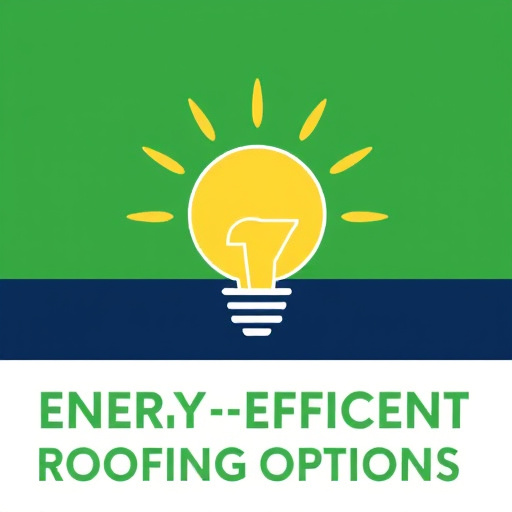Traditional roofing's environmental impacts drive demand for energy-efficient alternatives like high-performance insulation, solar panels integrated into shingles, and cool roofs. These options reduce energy use, carbon footprints, and urban heat islands. Recycling content, advanced ventilation systems, and smart technology further enhance sustainability while maintaining aesthetics and performance. Future trends include lightweight recycled tiles, eco-friendly membranes, and multi-functional smart roofing systems.
The roof over our heads doesn’t just shield us from the elements; it significantly impacts our environment. Traditional roofing materials, while common, contribute to carbon footprints through resource extraction and waste generation. This article explores environmentally conscious roofing solutions. From solar panels and cool roofs to recycled content and energy-efficient alternatives to asphalt shingles, we delve into innovative options that balance aesthetics, durability, and ecological responsibility, highlighting the growing importance of energy-efficient roofing options in mitigating climate change.
- Understanding Environmental Impact of Traditional Roofs
- Benefits of Energy-Efficient Roofing Materials
- Solar Panels: A Revolutionary Green Roof Option
- Eco-Friendly Alternatives to Conventional Asphalt Shingles
- Cool Roofs: Reducing Urban Heat Island Effect
- Longevity and Sustainability in Low-Impact Roofing Solutions
- Recycled Content: Transforming Waste into Roofing Assets
- Ventilation Systems: Key to Energy-Efficient Rooftops
- Green Installation Practices for Eco-Conscious Roofers
- Future Trends Shaping Environmental Roofing Innovations
Understanding Environmental Impact of Traditional Roofs
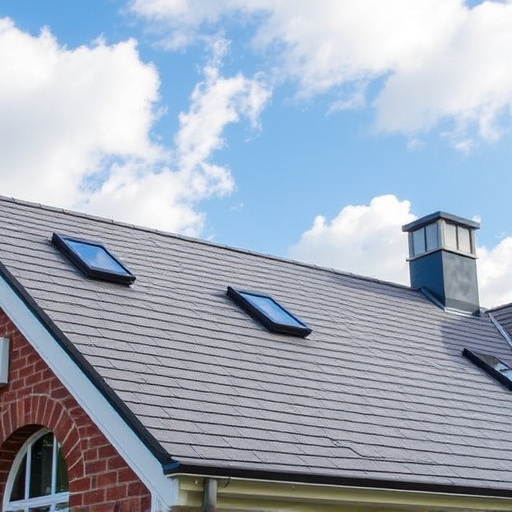
Traditional roofing materials have long been associated with significant environmental impacts. Many common roof coverings rely on non-renewable resources and contribute to greenhouse gas emissions throughout their lifecycle. For instance, asphalt shingles, while affordable and widely used, are derived from petroleum products and generate considerable carbon emissions during production and disposal. Additionally, they offer minimal protection against extreme weather conditions, leading to increased energy costs for cooling or heating.
This is where energy-efficient roofing options step in as a sustainable solution. High-performance insulation for roofs, such as those with superior R-values, can significantly reduce heat transfer, decreasing the need for HVAC systems and lowering carbon footprints. Furthermore, energy-efficient replacement shingles are now available, offering comparable aesthetics to traditional materials while providing better thermal resistance. Even more innovative approaches integrate solar panels directly into roofing materials, harnessing renewable energy and minimizing the overall environmental footprint of structures.
Benefits of Energy-Efficient Roofing Materials
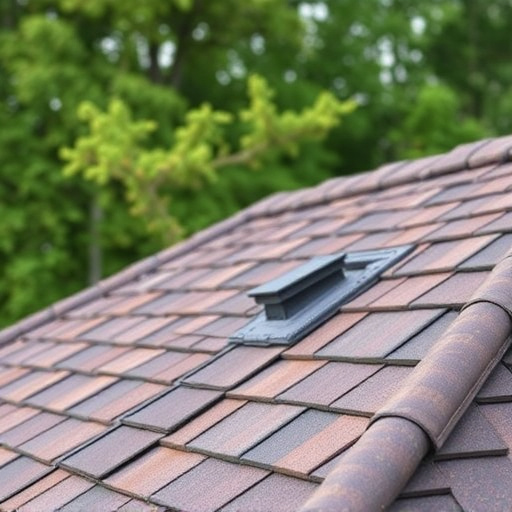
Roofing solutions that prioritize environmental consciousness offer a plethora of benefits, with energy-efficient roofing options at the forefront. These materials are designed to reduce the energy consumption associated with heating and cooling buildings, thereby lowering carbon footprints significantly. In terms of sustainability, low-slope energy-saving roofs, for instance, reflect sunlight rather than absorbing it, which helps in minimizing the urban heat island effect. This simple yet effective strategy can lead to substantial energy savings and reduced strain on local power grids.
Moreover, roofing products with superior thermal efficiency play a crucial role in achieving net-zero energy buildings. By effectively insulating structures, these innovations prevent heat transfer through the roof, leading to improved indoor comfort and reduced reliance on HVAC systems. The result? Lower energy bills for homeowners and businesses alike, alongside diminished environmental impacts. Energy-efficient roofing innovations are not just about aesthetics; they represent a step towards a greener future, where buildings become part of the solution rather than the problem.
Solar Panels: A Revolutionary Green Roof Option
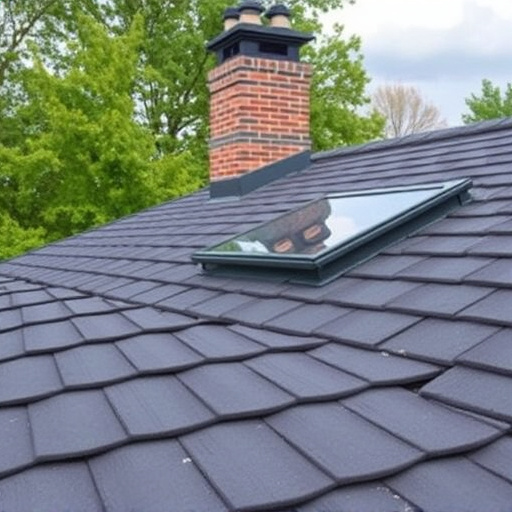
Solar panels have emerged as a revolutionary green roof option, leading the way in energy-efficient roofing innovations. These versatile and sustainable technologies seamlessly integrate into various roofing designs, offering both environmental benefits and significant energy savings through roof design. By harnessing the power of the sun, solar panels generate clean and renewable electricity, reducing carbon footprints and dependency on conventional energy sources.
Beyond their environmental advantages, solar reflective roofing options further enhance energy efficiency by reflecting a substantial portion of sunlight back into the atmosphere, thereby minimizing heat absorption. This additional layer of insulation helps regulate indoor temperatures, decreasing the need for air conditioning during hot months and ensuring year-round comfort while promoting sustainable living practices.
Eco-Friendly Alternatives to Conventional Asphalt Shingles
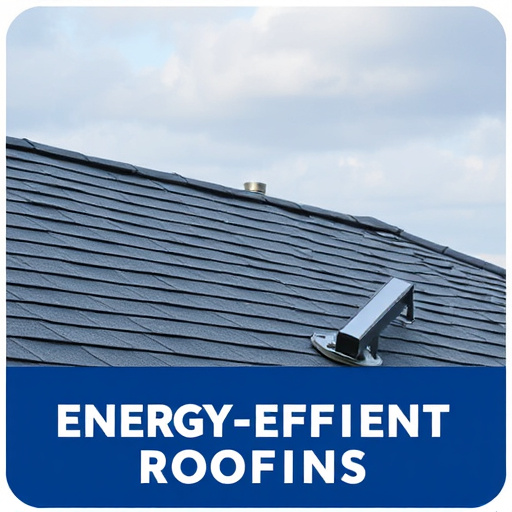
In recent years, there’s been a growing demand for eco-friendly alternatives to conventional asphalt shingles as part of an overall movement towards environmentally conscious roofing choices. Traditional roofing materials contribute significantly to carbon footprints due to their production and disposal. Fortunately, the market now offers numerous energy-efficient roofing options that not only reduce environmental impact but also promote sustainability.
One prominent alternative is incorporating solar panels integrated into roofing. These innovative solutions double as both roofing material and renewable energy source, harnessing sunlight to generate electricity. Moreover, modern solar shingles offer similar aesthetics to conventional asphalt shingles while providing excellent energy efficiency ratings for roofing. This blend of functionality and environmental responsibility is a significant step towards a greener future, making it an attractive option for homeowners looking to reduce their carbon footprint without compromising on style or performance.
Cool Roofs: Reducing Urban Heat Island Effect
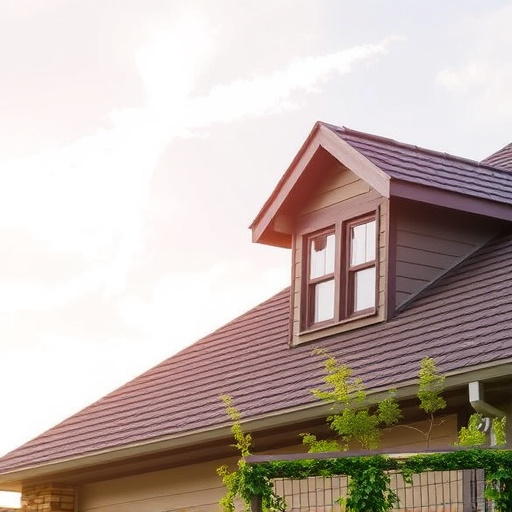
Cool roofs are an innovative roofing solution that plays a significant role in mitigating the urban heat island effect. This phenomenon occurs when cities become significantly hotter than their rural surroundings, primarily due to heat absorption by buildings and infrastructure. Traditional roofs absorb sunlight, leading to elevated indoor temperatures and increased energy consumption for cooling. However, cool roofs use reflective materials and coatings to bounce sunlight back into the atmosphere, reducing heat transfer. This simple yet effective strategy can lower building temperatures, decrease energy demands, and contribute to a more sustainable urban environment.
By adopting energy-efficient replacement shingles or considering environmentally friendly re-roofing options, commercial property owners can play their part in creating a cooler, greener cityscape. Cool roofs are not just about aesthetics; they offer long-term benefits for both the building’s occupants and the surrounding ecosystem. This roofing solution aligns perfectly with the growing demand for commercial energy-efficient roofing solutions, providing an opportunity to enhance environmental consciousness while reducing operational costs.
Longevity and Sustainability in Low-Impact Roofing Solutions
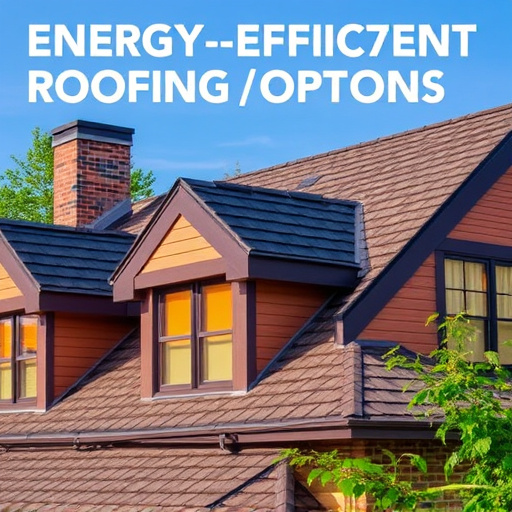
Roofing solutions that prioritize longevity and sustainability are increasingly becoming the go-to choice for environmentally conscious homeowners and businesses. Low-impact roofing options, such as energy-efficient materials and designs, offer not only a reduced carbon footprint but also long-term cost savings. These innovations in roofing technology include advanced insulation, reflective coatings, and recycled content, which collectively decrease energy consumption and waste generation.
For regions with warm climates, environmentally conscious roofing choices present unique advantages. Energy-efficient re-roofing options, tailored for such environments, can significantly mitigate the urban heat island effect, thereby reducing strain on local cooling systems. By adopting these cutting-edge roofing solutions, property owners not only contribute to a greener planet but also ensure their buildings remain comfortable and energy-responsive throughout the year.
Recycled Content: Transforming Waste into Roofing Assets
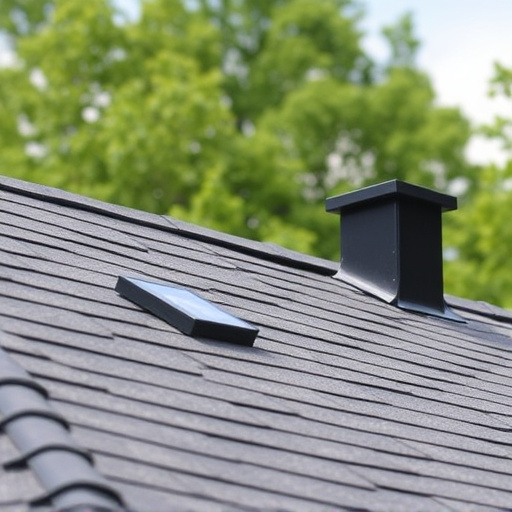
Roofing solutions that incorporate recycled content are transforming waste into valuable assets, contributing to environmental consciousness and sustainability. Traditional roofing materials often require significant energy for production, but incorporating recycled materials can significantly reduce this environmental footprint. From recycled rubber to plastic and metal, these innovative options not only divert waste from landfills but also offer excellent durability and performance.
By choosing roofing solutions with a focus on recycled content, homeowners and businesses contribute to reducing energy costs associated with manufacturing new materials. Additionally, some recycled roofing products have inherent energy-efficient properties, such as reflective surfaces that aid in passive solar design, further enhancing energy independence. This shift towards eco-friendly roofing not only benefits the planet but also aligns with the growing trend of sustainable building practices, ensuring a greener future for all.
Ventilation Systems: Key to Energy-Efficient Rooftops
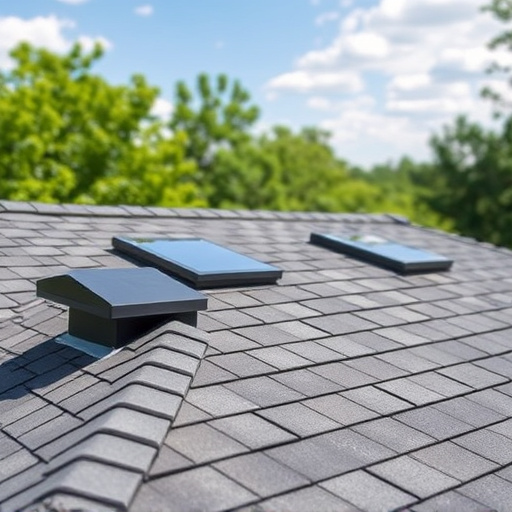
Ventilation systems play a pivotal role in modern, energy-efficient roofing solutions. By facilitating proper air circulation, these systems help regulate roof temperatures, reducing the need for excessive cooling or heating inside buildings. This, in turn, significantly lowers energy consumption and contributes to long-term cost savings on energy bills. Moreover, many ventilation systems are designed with sustainability in mind, incorporating eco-friendly materials and low-maintenance features that further enhance their environmental benefits.
For homeowners looking into energy-efficient roofing options, considering a combination of high-performance insulation, reflective coatings, and efficient ventilation can make a substantial difference. Not only do these measures help protect against extreme weather conditions, but they also create a more comfortable indoor environment while minimizing the carbon footprint. Additionally, some modern ventilation systems seamlessly integrate with smart home technology, allowing for automated adjustments based on temperature and occupancy, further optimizing energy usage.
Green Installation Practices for Eco-Conscious Roofers
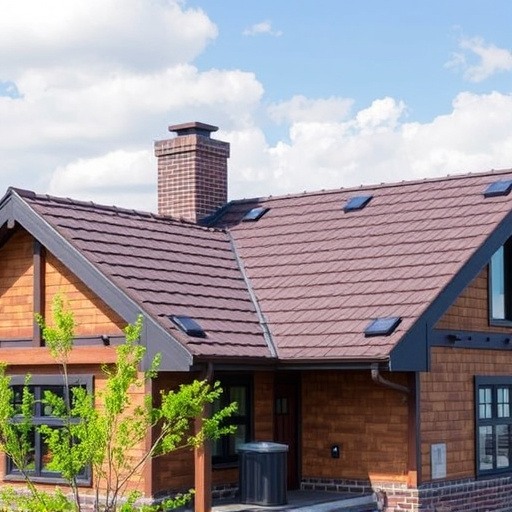
Eco-conscious roofers are increasingly adopting green installation practices that extend beyond traditional roofing solutions. One key aspect is utilizing energy-efficient roofing options, such as reflective materials and cool roofs, which help mitigate the urban heat island effect. These innovations not only reduce a building’s carbon footprint but also contribute to long-term cost savings on energy bills through roofing.
Additionally, sustainable roofing practices involve choosing materials sourced from recycled or renewable resources. By embracing these methods, roofers can significantly enhance their environmental impact while ensuring durability and longevity in various climates, including those for warm environments. Such practices reflect a broader trend towards prioritizing both aesthetic appeal and ecological responsibility in modern roofing solutions.
Future Trends Shaping Environmental Roofing Innovations

The future of roofing is being reshaped by a growing awareness of environmental sustainability and the need for energy-efficient solutions. Innovations in materials science are leading to advancements like lightweight, recycled roofing tiles and high-performance, eco-friendly membranes that offer superior protection against weather while minimizing environmental impact. One notable trend is the integration of thermal insulation for flat roofs, which not only enhances energy efficiency but also reduces greenhouse gas emissions by lowering heating and cooling demands.
Energy savings through roof design are another area gaining traction. Cool roofs, designed to reflect sunlight and absorb less heat, are becoming more prevalent in urban areas to combat the urban heat island effect. Additionally, the development of smart roofing systems equipped with sensors and photovoltaic panels is transforming rooftops into multi-functional spaces that contribute to renewable energy generation and environmental consciousness. These developments signal a promising future for roofing solutions that balance aesthetic appeal, structural integrity, and environmental responsibility.
In light of the above discussions, it’s clear that environmental consciousness in roofing is no longer a niche concern but a necessary revolution. By embracing energy-efficient roofing options like solar panels, cool roofs, and recycled content materials, we can significantly reduce our carbon footprint. As technology advances and green installation practices become the norm, the future of roofing looks brighter and more sustainable. Choosing these eco-friendly alternatives is not just beneficial for the planet but also economically viable in the long run. Thus, it’s time to adopt these innovative solutions and lead a greener path towards a more environmentally conscious built environment.
